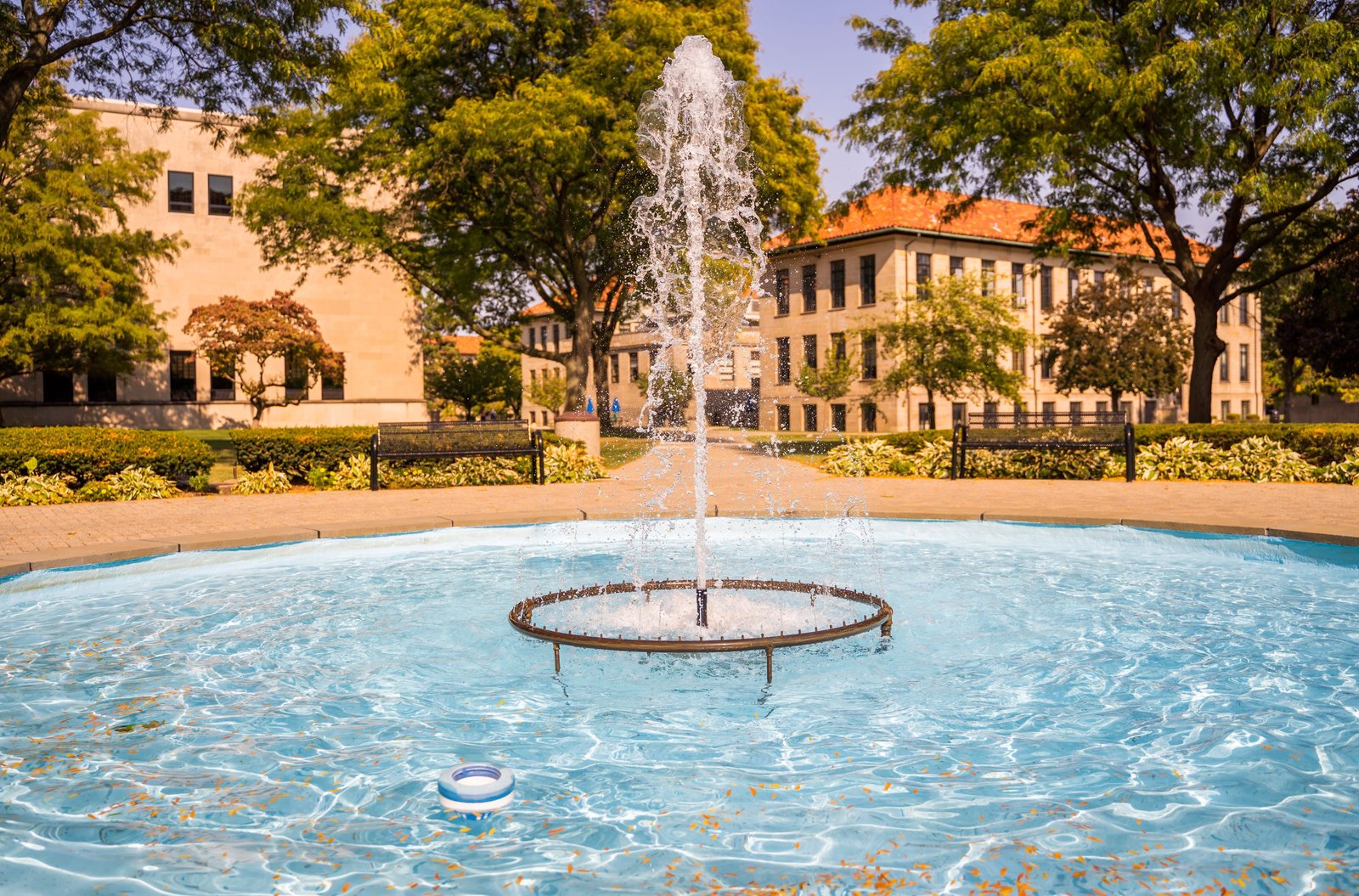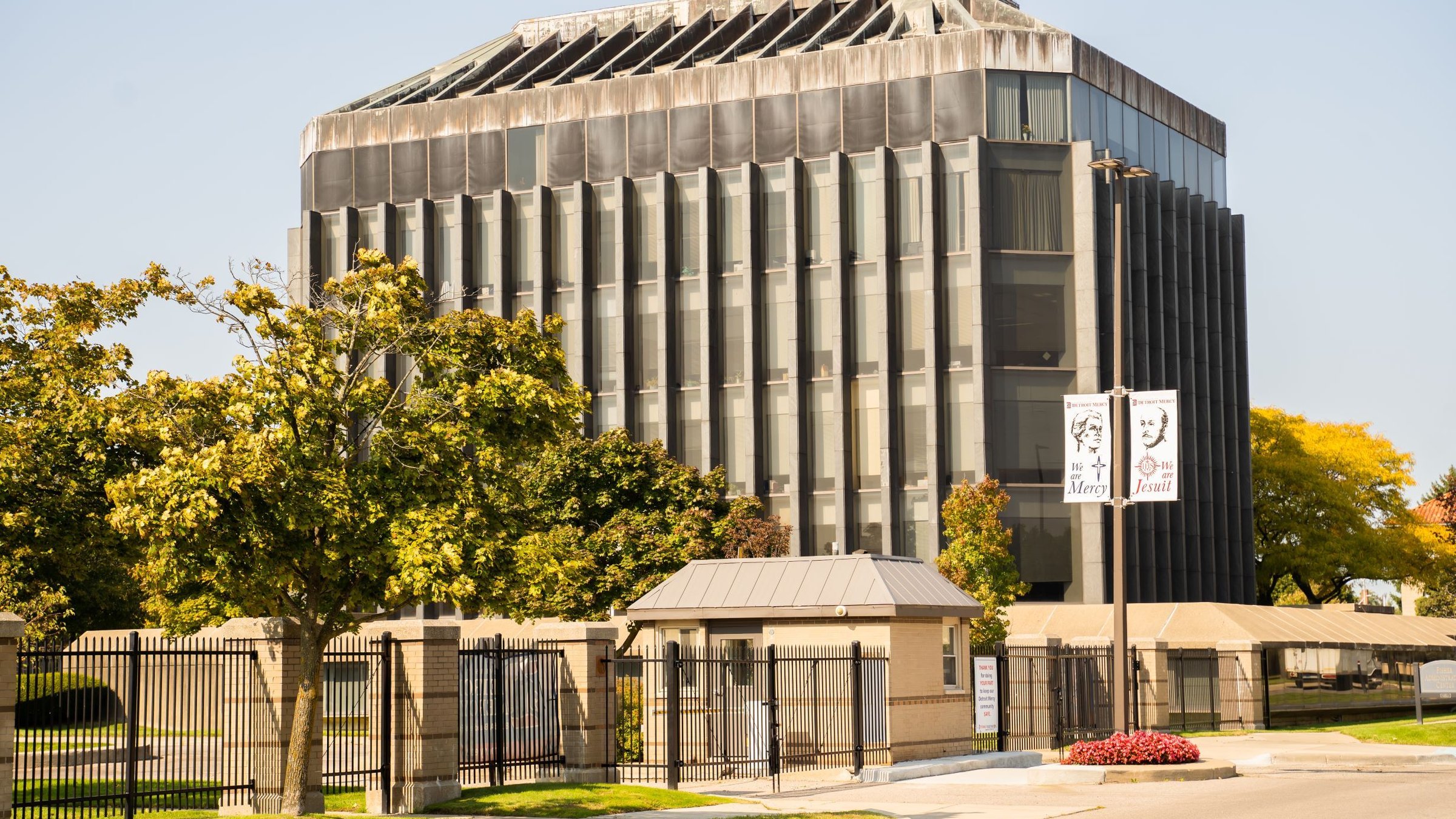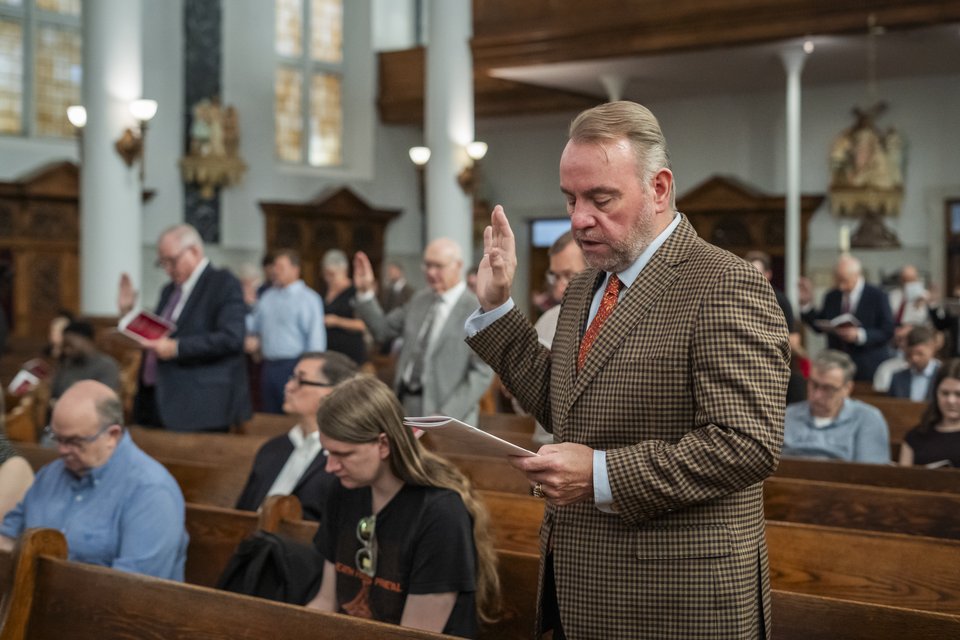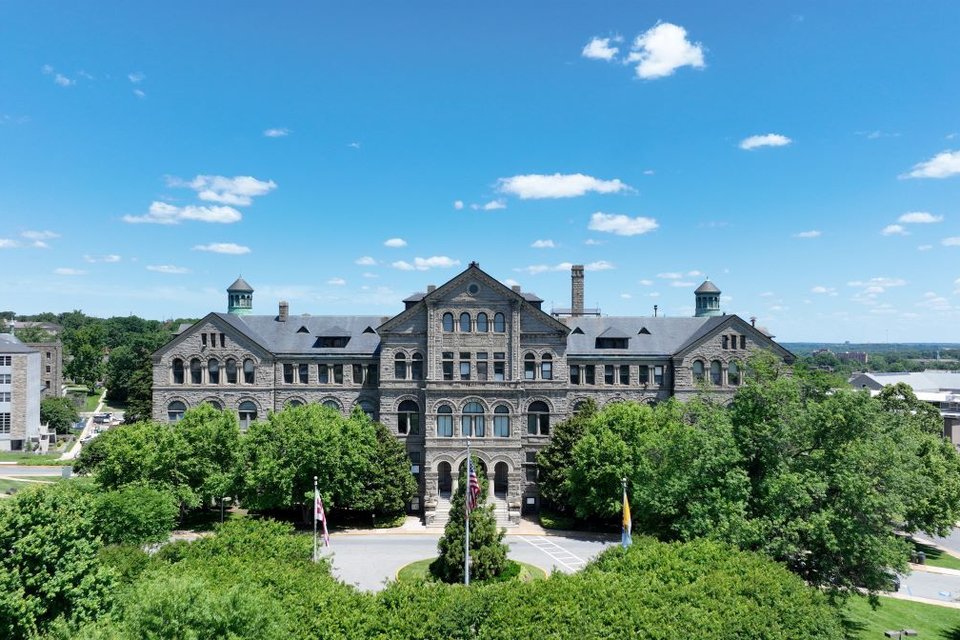Work will begin soon to raze the 1960s-era landmark as part of a multi-year, multi-million-dollar campus improvement plan
DETROIT — Besides its famous clock tower, perhaps no building on the University of Detroit Mercy’s McNichols campus in northwest Detroit is more recognizable than the 1960s-era Fisher Administration Center.
Its black slate exterior a sharp contrast from the Spanish Mission-styled campus buildings designed and constructed in the 1920s, the sleek, 52,000-square-foot, five-story building's completion marked a turning point in the campus’ history, consolidating the university’s central offices and heralding a new, bright future for Detroit’s largest Catholic institution of higher learning.
Towering over Livernois Avenue, the structure has remained among the university's most distinguishable features, welcoming visitors, students and faculty alike.
More than half a century later, the university is turning another page as it plans to demolish the Fisher Administration Center as part of a multi-year, multi-million-dollar campus enhancement plan.
In an Aug. 7 news release, the university said work will begin soon to raze the building, which it said has become too costly to maintain. Permits are pending with the city of Detroit, it said.
Most of the administration offices previously housed in the Fisher Administration Center — which has been closed for the past year — have been moved to the newly renovated and expanded McNichols Campus Student Union.
“Fisher is obsolete,” Tamara Batcheller, associate vice president for facilities management, said in an article posted to the university’s website. “The costs to fix it are far higher than it would be to tear it down. It makes no sense to try to renovate.”
At the time the Fisher Administration Center was built, the university’s central offices were spread over seven separate buildings on campus. Seeking a way to help modernize the campus, Detroit’s famous Fisher brothers — Charles Sr., Alfred J. Sr., Edward F. and William A. — gave $750,000 to help the university “operate more efficiently and more effectively fulfill its important role in the Detroit community,” William A. Fisher said at the time.
The building was designed by Gunnar Birkerts and Co., and ground was broken on Dec. 13, 1963.
Besides providing a space for the university to meet students’ and faculty members’ needs, the construction of the building — which was completed in 1966 — also freed up space for additional classrooms and labs in the McNichols campus’ other buildings.
According to the university’s website, some claimed the black slate exterior was chosen to match the black exteriors of the campus’ other buildings, which had grown covered in soot from the clock tower’s smokestack. Once the older buildings were cleaned, however, the Fisher Administration Center “looked like an outlier, though it was a landmark on Livernois.”

The building’s design made its own mark, however, as in 2003, the Michigan Chapter of the American Institute of Architects recognized the Fisher Administration Building for its “architectural design of enduring significance.”
In recent years, the building has suffered its share of maintenance issues. According to the university, the building’s elevator would occasionally get stuck, trapping students and employees between floors. Restrooms in the stairwells presented accessibility challenges to disabled students and faculty, and older windows, HVAC and waterproofing issues persisted.
While the building closed last year, it has remained useful as a training facility for local police departments, the university said.
Once begun, demolition is expected to take several months. The site is expected to remain greenspace as the university decides how to use the space.
The project was announced in 2020 as part of several initiatives designed to make the University of Detroit Mercy a more attractive option for prospective students. In 2019, the Jesuit- and Sisters of Mercy-sponsored university completed the largest fundraising campaign in its history, raising $115 million.
In addition to enhancements at some of the McNichols campus’ other buildings, the university announced plans to open a new Novi campus to house its expanded graduate and health education programs, as well as restructured tuition and financial aid programs.
In addition to the main McNichols campus, Detroit Mercy also operates a law school on East Jefferson in downtown Detroit, and a dental school in Corktown. Certain classes are also offered at the Macomb University Center in Clinton Township and other locations throughout the state.
The University of Detroit Mercy was formed in 1990 as a merger between the former Mercy College of Detroit, founded in 1941 by the Sisters of Mercy, and the University of Detroit, founded by the Society of Jesus (Jesuits) in 1877. It continues to educate students in both the Mercy and Jesuit traditions, including several priests and sisters on its faculty and staff.
Copy Permalink
Catholic colleges











